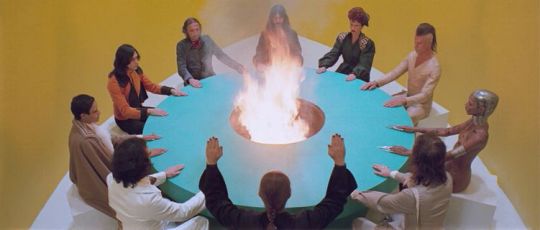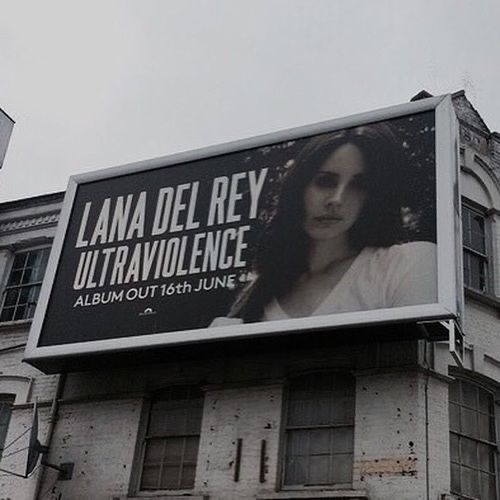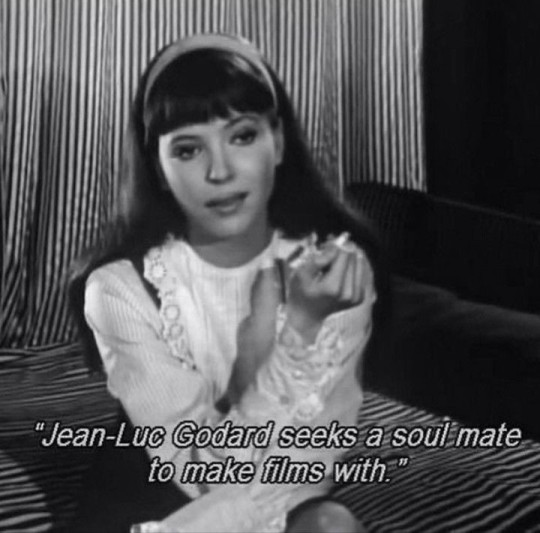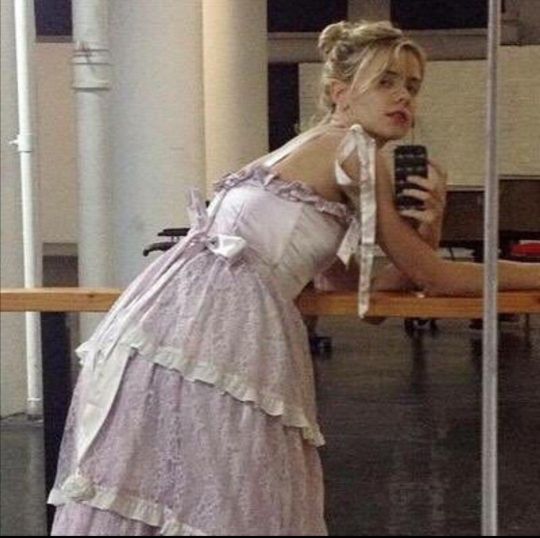Text
What does ‘hegemonic masculinity’ look like in the contemporary gender order?
Raewyn Connell’s Masculinities (1999) provides readers with a useful hierarchal structure called the gender order. She dissects gender into four forms of masculinity with a heavy focus on social elements such as class, ethnicity, and sexuality, to name a few. At the benchmark of masculinity sits what Connell refers to as ‘hegemonic masculinity.’ Connell argues that hegemonic masculinity grows most distinct in its opposition to femininity. However, hegemonic masculinity alongside the subgroups of masculinity that sit beneath them are fluidly dependent on the culture they exist in. This essay will focus on providing a detailed illustration to readers of hegemonic masculinity within contemporary western culture.
Those categorised as hegemonically masculine exercise authoritative dominance over the rest of their peers on a on a consistent basis. One may perceive someone exemplifying hegemonic masculinity as a white, wealthy, prestigious, and heteronormative member of society. In an interview with UCLovain, Connell discusses the risk factors that arise from the socio-political forces that hegemonic masculinity represents, referring to a certain disregard for the consequences for others that may arise, as a result of their actions from positions of power. An example that aligns with what Connell describes can be seen in HBO’s TV series Succession (2018). Vaguely inspired by Australian media mogul Rupert Murdoch, protagonist Logan Roy lives to accumulate wealth and vast control over western society. Every decision he makes is solely based on profit maximisation and the emptiness, depravity and disconnectedness of his children is symbolic in this regard. Logan’s children seem to exert what feels like an abundance of power over the western sphere. However, when examining their careers and motives more closely, one will catch a glimpse of the puppet-master’s strings. Even in the children’s most independent roles, it grows clear that their intentions lie thickly in either attempting to gain their father’s approval, or in acting out of spite against him. Logan’s sons (particularly Kendall and Roman Roy) borderline between hegemonic and complicit masculinity, in that their influence and capital is mostly dependent on their father’s empire and the large dose of nepotism that comes with that.
Corporate examples of hegemonic masculinity seem most appropriate to refer to within the contemporary gender order due to their status as beneficiaries in this capitalist and neoliberal society. Neoliberal features of contemporary culture are important to note, as it means figures of hegemonic masculinity’s duties (such as paying significantly larger sums of their wealth in taxes to the state) to support less privileged members of society are more or less slackened. Benefits of hegemonic masculinity being consciously reaped at the expense of others is what Connell refers to as the patriarchal bargain. As a heterosexual man, rejecting the feminine and embracing their own masculine traits and the rewards that accompany them in a patriarchal society, whether they do so consciously or not. Stephen Schacht acknowledges this by dividing the men that receive patriarchal gain by being born into this world a cis, heterosexual man, from those consciously acting against the interests of anybody who experiences adversity via patriarchal means.
4 notes
·
View notes
Text
a very personal evening checklist
ʀᴇᴍɪɴᴅᴇʀ → It takes an average of 66 days to create or change a habit. Don’t give up now!
☐ Take off your shoes when you get home. According to several studies, the sole of a shoe can carry hundreds of thousands of bacteria. In a biblical passage, God is said to have spoken to Moses in these words: “Take off your sandals, for the place where you are standing is holy ground.” Isn't that what the safety and comfort of a home means to us? A sanctuary for the soul? Taking off one's shoes is just the smallest sign of reverence. For this very reason, I try to keep my environment as clean as possible.
☐ Fulfill your commitments. Study, finish your work or respond to the last emails of the day. I don't get changed until I'm done. This is an important part as it allows me to ease my mind about the duties I know I am handling. It's hard for me to relax knowing I have a something to do.
☐ Disconnect, break away from screens as early as possible. Try to get away from the constant attention and energy demanded by our electronic gadgets. Blue light causes your brain to believe that it's still daytime, resulting in a reduction of the production of melatonin. In other words, your brain starts working to keep you awake. For those of you who are curious, I don't watch television, as I don't have one.
☐ If possible, be physically active. Walk for 20 minutes, do some yoga, use the exercise bike or go to the gym. Remember that cleaning is a double-duty activity. It's a great way to get you to move. Try to establish a physical routine: depending on your needs, try to stick to a program of one, two, three… or six sessions a week. If you really don't have time, focus on walking to get to and/or come back from work.
☐ Wash yourself. Again, everyone has a different approach to it, depending on their resources and organization. Science recommends taking a shower in the evening, because during the day we accumulate many bacteria, viruses and parasites that affect the regeneration of our skin. During the night, our skin has plenty of time to regenerate. (It is important to remember that taking two showers a day is not recommended: first, because it destabilizes your skin, which has not fully regenerated, second, because it is aggressive for sensitive skins and third, because it is not very nice to Mother Nature.)
☐ Get comfortable. Except for events or evenings when I'm not home alone, I prepare my dinner and enjoy it in my sleepwear.
☐ Prepare a light dinner. Avoid all forms of stimulants such as caffeine, sugar, energy drinks. Try to have an early dinner. I know this is cultural (coming from a family where dinner is served around 8 or 9pm), but a light, early dinner will help you sleep better, have better digestion, boost your metabolism and reduce your blood pressure.
☐ I also use this time to enjoy the presence of my loved ones or to think about calling them, or sending them a message… because they represent a real emotional support for me. Studies have shown that spending time with friends and family contributes greatly to happiness. Among other things, it reduces anxiety, increases productivity and improves mental health.
☐ If you have time, take care of yourself. Follow your skincare routine, even if it's as simple as applying a moisturizer and using deodorant, as it is for me. Remember to brush your teeth. Use slippers at home. Slippers are great for protecting your feet from the cold and keeping your blood flow from slowing down.
☐ Like with my morning routine, I exercise my mind, my faith and/or my creativity for a few minutes. I think it is as important to lighten your mind as it is to exercise it. Here again, I pray for a few minutes. I also write a few notes about my day in my journal. I have developed a sort of obsession with diaries from past centuries and the desire to record intimate details of our lives… and it is true that I harbor the hope that someday I will look back at my writings, much later in life, and find a sort of comforting nostalgy in them. Reading is also one of my favorite hobby. I often fall asleep while reading.
☐ Plan the next day as best you can. I know that some people find it very helpful to prepare their lunch, outfit and/or bag for the next day. This is the time to do what feels right for you. As for me, I just set my alarm clock (If possible, get an alarm clock that is not your phone.)
☐ Determine a time to go to bed and stick to it. If it takes a while to fall asleep (this obviously does not apply to people with sleep disorders...), I invite you to hang out in bed with a book or some relaxing music. I guess I'm pretty harsh, because when this happens, I prefer to condemn myself to boredom, in the dark and in silence. I think it works for me.
I'm so glad that my morning routine inspired many people. I just wanted to come back to something that I feel is very important: Life is made up of countless unexpected events. The world is not all black and white, but is composed of a multitude of shades. This means that none of your days will ever resemble the other. Be flexible and forgive yourself: lists are only there to help us organize this immense chaos that is life. Sometimes, self-care also means allowing the unplanned: a rest, or a change of plans. Again, this list is intended to be personal. Feel free to rewrite it!
460 notes
·
View notes
Text
productive days, a very personal morning checklist
ʀᴇᴍɪɴᴅᴇʀ → It takes an average of 66 days to create or change a habit. Don’t give up now!
☐ Wake up at a predetermined time. Set your alarm clock early if you’re the type of person who might feel the need to linger in bed for a while before getting up. If possible, get an alarm clock that is not your phone.
☐ Open the curtains and, if possible, air the room for a while, without making the bed yet. According to a study published in 2006 in the journal Experimental and Applied Acarology, making your bed actually creates a comfortable refuge for mites. Researchers at Kingston University’s Centre for Immunology in England concluded that putting back the sheets or comforter as soon as you wake up creates an ideal environment for mites to grow. Air the room for a while.
☐ Stay hydrated. Drink water.
☐ If possible, avoid screen time until the end of the list. My mornings allow me to escape social media, messages and demands from work, friends and family. It’s a privileged moment in which I avoid any unnecessary anxiety or negative thoughts.
☐ Exercise your mind, your faith, your creativity for a few minutes. For some, it is a combination of meditation and affirmations. As for me, I pray for a moment or two. I also sometimes write a few lines in my journal, although I much prefer to reserve this moment for my evenings. This is the time to get inspired: listen to your favorite podcast, read a little. (Don’t start reading new books until you’ve finished the current one, even if the book is pretty boring.)
☐ Prepare your bag for the day. This is the time to pack your lunch box, your notebooks, your computer for work and all the necessary chargers… I never do it the night before.
☐ Be physically active for at least 30 minutes. If possible, an hour or two. Run, go for a quick walk, stretch, do yoga, use the equipment in your apartment or go to the gym.
☐ Wash yourself. Everyone has a different approach to it, depending on their resources and organization. Wash up or take a shower or a bath, brush your teeth and floss and if you have one, do your skin care routine.
☐ Get ready for the day. Get dressed and comb your hair even if you don’t plan on going out for the day. As someone who has suffered from mental health issues that have kept me in bed for days, getting ready in the morning subconsciously pushes me to offer myself a picture of me ready to face the day. Often, it also encourages me to go out…
☐ Have a cup of coffee, a cup of tea, a glass of warm water. Try to eat before ingesting any form of caffeine. If possible, eat a full breakfast or a fruit, but never go out on an empty stomach. Again, try to stay hydrated and drink water.
☐ Finish by making your bed. While the study referenced above does not advocate doing this, I find that the discipline and rigor involved in recreating a physically “neutral” environment allows my mind to unburden itself. For the sake of productivity, I suppose. For the same reasons, if possible, never leave your stuff lying around in your room (like letting it pile up on a chair or desk).
☐ Start your day, outside the walls of your precious home.
Keep reading
766 notes
·
View notes
Photo







La Montaña Sagrada - Alejandro Jodorowsky (1973)
192 notes
·
View notes
Text
Shame as Punishment: How the Colour Pink and its Close Association with Femininity Has Been
Weaponised as a Tool of Humiliation
Throughout contemporary western society the colour pink symbolises femininity in its simplest form. It can be seen in ‘gender reveal’ parties performed to guests where pink confetti, balloons, or artificially coloured cake are revealed to announce to the party guests that their child will be assigned female at birth (AFAB). Pink for girls and blue for boys. Gender reveal parties are heavily critiqued by feminists, sociologists, and queer theorists alike in asserting that gender is not something to be condensed as a binary structure and using these two colours to identify the supposed ‘gender’ of the baby to be is a simplified and incorrect notion. It is emphasised that the gender binary definition limits the self-actualisation and bodily autonomy of the newly formed child.
Pink, however, has not always been so closely associated to femininity. In examining the hyperfeminine (with a dash of ‘girl power)’ pink enthusiasts represented in the media, such as Legally Blonde’s Elle Woods (2001), High School Musical’s Sharpay Evans (2006), Grease’s ‘The Pink Ladies’ (1974), and Barbie (1966), one may grow increasingly aware that these fictional women have only been borne within the past century. Ascribing colour to gender as practice in the West only began in the mid-19th Century, and initially to young children not babies at birth. By the turn of the twentieth century etiquette manuals of the time dictated that baby boys were dressed in pink and baby girls dressed in blue. It is considered that assigning blue for girls was an inference to the Virgin Mary, and pink to boys as it was a shade of red, a colour associated with strength, and hence masculinity (Bilal, 2019). Social constructionist context on this topic is provided this early in the essayto illuminate the ultimately contrived nature of gendered symbolism expressed through colour and clothing. This essay will illustrate how pink has been utilised against men in an array of significant instances exemplifying how men have been divided from women and homosexual menand the effeminacy with which they are often portrayed due to what are mostly imagined differences and hierarchical structures. Topics such as the incorporation of pink into a prison uniformto represent an apparent loss/lack of masculinity of the inmates in question will be discussed, as wellas homophobic branding and the normalisation of homophobic violence in western culture. Moreover, the prisoners in pink are by no means being compared to perpetrators of homophobic violence mentioned. The instances of homophobia mentioned throughout western culture are merely examples of the cultivation of the fear of those particularly troubled by the pink uniform.
Pink clothing items have been customised as uniform in prisons located in the US for very specific psychological reasons. US psychologist Alexander Schauss conducted a study that affirmed the soothing qualities that result in an individual’s exposure to the colour (Santos, 2022). Throughout hisresearch, he discovered that objects, images, or surroundings coloured pink reduced violent, hostile and aggressive behaviour and as a result, prison wards began to adopt the colour into their interior design. Not only do prisoners lack control over their environment, but their appearance and personal style as well. Former Maricopa County Sheriff Joe Arpario aka ‘America’s Toughest Sherriff’ (albeit self-proclaimed) took a step further in strategising with pink in prisons, contributing the colour to the male inmate’s uniforms (Mak, 2014). His additions to the uniform at the Arizona Prison included pink boxers, pink hand cuffs and pink flip flops. Arpaio raises the rhetorical question: ‘Why put them in a colour they like?’ Arpario successfully shamed and demeaned the prisoners under his authoritative dominance. He even paraded the prisoners to the public in just their pink boxers. To Arpario, the mortification of a prisoner’s self is priceless entertainment (Grisard, 2018). Canadian sociologist Erving Goffman (known for his contributions to the discourse of symbolic interactionism) breaks down the ego death of the inmate and the process of deidentification that they are
submitted to in his notable text Asylums: Essays on the Social Situations of Mental Patients and Other Inmates (1961).
Goffman dissects the intricate process of eradicating any residual sense of self-worth an inmate may have through societal role dispossession as one example. This can be applied to the prisoners in pink as their roles as masculine individuals are abruptly stripped from them. Moreover, Goffman directly speaks on an inmate’s lack of control over how they appear to their peers. He describes the standard prison uniform distributed throughout your average prison facility to be uncomfortable, old, cheap and highly unflattering. Not only do the prisoner’s under Arpaio’s authority lack a right to self-expression, but any shred of desire to present as a self-respecting individual is scorned and ridiculed. The inmates generally suffer from an undeniable sense of uselessness to the outside world, as a great distance is established between the prisoners in pink and symbolic representations of hegemonic masculinity. Australian sociologist Raewyn Connell is most famously known for her ideological concept of the gender order, where she defines the term ‘hegemonic masculinity’ as the benchmark of this hierarchal structure. Factors of Connell’s gender order includes prestige, status, wealth, and power (Connell, 2006). Four characteristics that inmates hardly have access to in prison. The additional shame and hopelessness contributing to the male prisoner’s experience through the effeminacy of their subjection to pink presentation is evidently paramount. In utilising Connell’s gender order to categorise the average prisoner would be to place them third on the hierarchy under marginalised masculinity, just after complicit masculinity. However the pink items of clothing that the prisoners of Phoenix, Arizona are forced to wear seemingly borders them between marginalised masculinity and subordinate masculinity. Complicit and marginalised masculinities are relatively similar in that they both comply to societal standards of masculinity; yet the former may lack access to certain privileges or are possibly considered as part of a minority group. Subordinate masculinity, however, consist of men in the LGBTQIA+ community. Subordinately masculine individuals are held with the same regard as women. The definition of marginalised masculinity thus aligns well with an inmate’s complete lack of freedom and control.
36-year-old Eric Vogel was detained in the prison of Phoenix, Arizona after being arrested for assaulting a police officer who had been answering a burglary call (Adams, 2012). Vogel may not have received his due process in its completion yet still was forced to wear the pink prison uniform. Vogel was a schizophrenic who was especially in need of ongoing support and psychiatric assistance that could only be conducted by employees of the facility. He died of a heart attack caused in the panic and trauma he experienced being chased by one of Arpaio’s police officers. Vogel’s loved ones claimed that he had been under the impression that he had been sexually assaulted in the facility under discussion and was since being prepared to be raped by members of the total institution: ‘Pink underwear sounds funny until you have a paranoid schizophrenic who thinks he’s being prepared to be raped,’ the Vogel family’s attorney exclaimed. Arpaio was successfully sued by the Justice Department for his established policy ultimately causing the death of Eric Vogel. Former Los Angeles The Independent correspondent Guy Adams’s article Sheriff's Pink Prison Uniform 'Led to Death' recounts Vogel’s first experiences as an inmate: ‘he was held down, stripped naked and forced to dress in the pink uniform by four sheriff's deputies’ (2012).
For prisoners particularly affected by the pink uniforms, pink doesn’t merely represent effeminacy, but also holds implications of homosexuality. During the Nazi regime (1933-45), many men suspected to be homosexual were detained in the concentration camps and were branded with pink triangles, much like the Jewish people imprisoned being branded with the yellow star of David to establish a harsh effect of stigma (Grisard, 2018). This here, is an appropriate time to introduce the gay panic defense and what exactly it represents.
Notable German philosopher Friedrich Nietzsche’s The Gay Science asserts the following quote of wisdom: ‘What is the seal of liberation? To no longer be ashamed of oneself (1882). The prisoners in pink experience shame, based on their failure to reach the heights of masculinity set before them and all other men. Shame often stems from a sense of dissatisfaction with the development of oneself. Swiss historian Dominique Grisard affirms that what Arpario intends is to shame the inmatesunder his control to the extent that they will avoid reoffending in the outside world at all costs. The Gay Panic defence has been used a significant number of times in a court of law. Its purpose is to minimise sentences of perpetrators who have committed violent acts against individuals who had allegedly made a homosexual advance on them (Tomsen and Crofts, 2012). Australian Professor of Criminology and Criminal Justice Stephen Tomsen and Professor of Criminal Law Thomas Crofts’s article ‘Social and Cultural Meanings of Legal Responses to Homicide Among Men: Masculine Honour, Sexual Advances and Accidents’ (2012) reports on the very violent death of Don Gillies at the hand of Malcolm Green (a young man Connell may group in the category of marginalised masculinity due to his unemployment and deep-seated insecurities). Tomsen and Crofts describe themurder of Gillies:
‘Gillies allegedly entered a bedroom where Green was sleeping over and made overtures by placing his hand on the younger man’s buttocks and fondling his groin. Green then responded with a round of extreme violence – punching and stabbing the victim with a pair of scissors he found on the floor and also repeatedly slamming his head against a wall. In a state of anger and shock Green later told police that he had killed Gillies as ‘he did worse to me. I killed him and I will tell you about it. He put it on me and I just snapped.’’
Green received a far lighter sentence than what he may have been otherwise, by a perpetrator of such a violent murder: ‘The result of a retrial in the late 1990s was that Green was convicted of manslaughter on the grounds of provocation with a maximum 10-year sentence’ (Tomsen, 2002: 78).How does a young man’s frail honour evoke such sympathy from a jury when another man’s life is lost because of it? Countless lives have been lost due to the allowance of intense homophobia in the culture of the western world and beyond. Looping back to Arizona’s prisoners in pink, one may find more clarity in how a colour can be used so effectively as a tool of humiliation. Vulnerable men like Green and Vogel are particularly subjected to being continuously marinaded in the homophobic tendencies of their culture in their experience of marginalised masculinity. They will go to great lengths to protect the masculine honour, whether they are physically harming others or physically harming themselves (Burton, 2020). The final usage of the Gay Panic defence in Australia occurred asrecently as 2020. The Gay Panic defence has since been abolished by the Australian Government.
In conclusion, society’s conceptual interpretations of masculinity are constrictive and harmful. The purpose of this essay is not to shame men (as one may ironically interpret this essay and its consistent themes of male wrongdoing) but invite them to reflect on their true nature and how it is not tied to these internalised norms and values. As a man, one may read this and gift themselves permission to step out of the ‘man box’ that has imprisoned them, perhaps for the majority of their lifetime.
2 notes
·
View notes
Photo

Amy Winehouse circa 1996
Mitch Winehouse Collection / © Mitch Winehouse
13 notes
·
View notes




















































